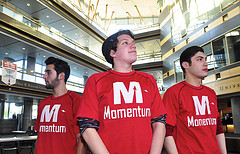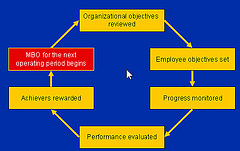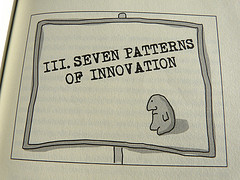Browse by Tag
- "Real" Innovation (2)
- Alignment (6)
- Business Innovation (9)
- Business Plan (2)
- Business Plans (1)
- Creativity (24)
- Critical Success Factors (4)
- Entrepreneurship (9)
- Global Competiveness (4)
- Human Side (11)
- India (1)
- Innovation (4)
- Innovation Consulting (18)
- Innovation Killers (3)
- Innovation Management (18)
- Innovation Tools (17)
- Innovation Training (24)
- Innovations (7)
- Inventions (16)
- IT Innovation (1)
- Leaders (5)
- Leadership (20)
- Leadership Development (13)
- Organizational Leadership (2)
- Organizational Strategy (20)
- Personal Values (6)
- Prediction (5)
- Strategic Innovation (38)
- strategic planning process (4)
- Strategy (3)
- Training (1)
- Vision (5)
- Weekly Dose (8)
Posts by Month
- 2014
- 2013
- 2012
- 2011
- 2010
- 2009
- 2008
- 2006
3 Books Full of Cool Innovation Tools
Every organization needs a basket of tools and methods to help find innovative ideas and solutions. Give access to the right tools to the right people based on the nature of their jobs and the types of challenges that needs to be solved. Surround them with proper innovation management processes, and the tools will help generate a culture of innovation and new profits. We are happy to share three of our favorite books on innovation tools.

The Takeaway
Innovation is an ever-evolving discipline. Many practitioners and academics have invented and popularized many tools to help you accelerate your innovation efforts.
Over to you. Please comment below.
- What other books would you add to the recommended reading list?
- What is your favorite innovation tool?
- In what area of innovation would you like to see new tools created?
6 Components to Building Innovation Momentum
Our research and experience has led us to identify six components of building momentum and change to help you accelerate your innovation journey and lift off.

- Develop your innovation story. Develop a compelling case for innovation, what innovation is, and why the company is pursuing the innovation journey now. Include how it will benefit everyone.
- Evoke change leadership. No one likes change. During the uncertainties of a change process, people don't hang onto concepts, they hang onto people. Create a sense of urgency and build awareness and excitement about innovation for your key sponsors and change agents.
- Identify innovation leaders and best talent. Identify the natural intrapreneurs, innovation champions, and innovation igniters along with your key innovation leaders, advisors, and mentors. This talent pool will help you build the required innovation capability.
- Communicate, communicate, and communicate. Go for fast and small wins and tell everyone about it. Collect momentum data showing progress, and implement and integrate a solid public relations strategy using any and all resources at your disposal.
- Build awareness--educate everyone. In many ways an innovation change initiative begins and ends with education. It is the primary method of advancing and improving organizational knowledge and acceleration for desired changes in the hearts and minds of everyone involved.
- Protect the momentum. Vigilantly protect innovation principles. Many will want to go back to status quo and forget the agreements, processes, and principles in the playbook. Every small win is a huge step toward the future and part of the foundation-building process. Protect the foundation.
The Takeaway
Innovation momentum is created, not decreed by senior management. Use your momentum to establish your innovation objectives and goal.
Over to you. Please comment below.
- What steps would you add to the list?
- How do you motivate your innovators?
- Please share an anecdote about innovation momentum.
5 Important Innovation Change Questions
In our experience at the DeSai Group, when dealing with innovation as a major change initiative, employees seek answers to these five questions:
- What is happening with the innovation program?
- Why are we pursuing innovation as a major change?
- When is it going to happen?
- How will I be impacted during the rollout and after implementation?
- Where can I go with more questions, issues, and concerns related to the innovation program in my area?
What if we do not communicate to staff?
If these questions are not answered, you are leaving it to chance for employees to create their own interpretations, leading to possible negative consequences and waste of your valuable resources.

Communication Plan Template
Your high-level communication plan may include these points:
- Develop answers to the five questions. Then make sure the questions are addressed in every innovation initiative communication document, meeting, and webcast.
- Develop a one-minute message--your elevator pitch about the innovation program. It should describe the business case and vision for the future.
- Demand consistent dialog at all levels, especially middle management.
- Use multiple media to teach and tell--remove uncertainties and doubt from day 1.
- Clearly identify the objective of each communication: awareness building, skill development, network development, employee engagement, and so on.
- Check often for alignment of process objectives and productivity for the parties in the communication activity.
- Be open to examine and test for what people hear.
- Actively respond to feedback and make adjustments to the plan as required.
Communication, Communication, Communication
Don't underestimate the need to repeat the messages even when you know everyone has heard them time and again. Even with your best efforts, there are always many who will not understand the importance of the innovation change initiative.
There have been stories where after six months of implementation activities, senior executives have publicly asked, "Why are we doing all this innovation stuff?". Although this raised a few eyebrows, the question was taken seriously and led to rather thorough discussions of the whys that had not surfaced before.
The Takeaway
Innovation is about approaching products and processes in a different way. The communications surrounding the innovation effort require different methods as well.
Over to you. Please comment below.
- How do you disseminate information about your innovation change program?
- What else would you add to the communications plan template?
- What other questions do you find that employees tend to ask?
Strategic Acquisitions - Telecommunications Case Study
Everything is connected to everything. Everything is moving from large, to small, to micro, to nano. That means computing power in the palm of our hands and soon in our blood cells.
In order to turn data into information and knowledge, we need telecommunications. As an example, one of the largest growing fields is the convergence of 2-D data and entertainment. The convergence requires much larger and more efficient communication pipelines. Not everyone needs the same pipeline of services. Therefore, the Telecommunications industry must respond with customized communication services for any rich-media object. That means, for anyone in the world, at anytime, all the time, in any direction.

Client Situation
Let's take a look at a US Based, Telecommunications company with 9,000 employees, operating in 34 states plus one international operation.
They sought DeSai's help to develop new service offerings. Organic growth was their focus although they were open to acquisitions that would bring capabilities the company sought for wireless communications. The company asked DeSai to validate the targets before it spent hundreds of millions of dollars on the acquisitions.
DeSai Approach
The DeSai team dug deep into what jobs customers were really trying to get done in the target market by conducting interviews, implementing surveys and performing observational research.
The work resulted in the conclusion that customers were seeking to accomplish a set of jobs involving much different performance dimensions than what the client had originally envisioned.
DeSai Recommendation
DeSai recommended acquiring the capabilities to address the jobs from one of several struggling (and inexpensive) firms, rather than the high-priced acquisition target the firm was considering. Why? Because of the different capabilities identified during the vetting process.
Results Are The Measure of Innovation Success
How did applying the DeSai Body of Knowledge impact the company?
- DeSai's recommendation saved the telecom client millions of dollars in acquisition costs while showing the company an inexpensive route to acquire the capabilities it really needed to address the right customer jobs-to-be-done.
- Client achieved 22% top-line growth in first three years.
- 15% net contribution to the bottom line during the first three years resulting from the innovation program/process.
The Takeaway
Change your innovation culture to allow validation of key assumptions before committing large amounts of resources to a project.
Your Turn. Please comment below.
- What is your system of checks and balances for vetting possible acquisitions?
- How is convergence impacting your business opportunities?
- Do you prefer organic growth or acquisitions to increase the size of your business?
How to Define Innovation Objectives and Innovation Goal
To help facilitate a strong leadership conversation about innovation objectives and innovation goals, here are some examples of why you might choose to enable an innovation engine for your organization:
- To differentiate your organization in the marketplace
- To build customer loyalty
- To identify savings potential
- To achieve revenue potential
- To accelerate exploitation of new business ideas worthy of pursuing
- To a build climate and culture of innovation as per the organization's innovation mission
- To become a leading innovation brand for products and services in the markets served and new markets you may serve
- To improve and expand current products and services
- To access new technologies
- To access new markets
- To identify market trends
- To improve product quality and associated core processes
- To improve employee attraction, engagement, and retention
- To develop new competencies

Defining the Innovation Goal
The innovation goal should be visionary and exciting. It should be something that has not seen before, measurable at least once per year (eventually more often), customer focused, and ultimately delivering value (top line, mid line and bottom line).
Following are some examples of innovation goals:
- Increase the product pipeline from x to y, to grow the top line by 5% better than your sector's GDP.
- Annually achieve 25% additional margin from new customer-driven services.
- Increase the top line every three years by 25%.
- Double the top line and bottom line every three years.
- Achieve 25% of the top line from new services created within the past 24 months.
- Develop new customer-driven products from the top ten customers that will increase net margins by 5% every year.
- Build a new S-Curve: Invent a completely new business with a new category of offerings.
- Improve customer acquisition ratio by 15% every year for the next three years.
- Achieve a customer satisfaction index (CSAT) (or some other best practices method such as net promoter score (NPS) score of 6.0 out of 7.0 (85% or better).
- Achieve 25% net profit from 3 new businesses and 25 new current product enhancements in the next five years.
- 1% profit before income tax (PBIT) above the current PBIT targets.
- Top customers rate us as most innovative in markets and categories we serve.
- 2x/3y: Grow 2x every three years, both top line and bottom line.
- 3/30/3: Within three years achieve a rate of 30% new revenue from products/services introduced in last three years.
- 20/20: 20% of new business (top line) should come from 20% of new customers every year.
- 10/20/30: Ten new offerings that yield 20% growth in revenue and 30% growth in profitability.
- 50% of all products should be engineered or should include technologies from outside the firm by 2020.
These are good examples of innovation goals to consider. Use the list to engage senior leaders in dialog, debate, and consensus. Then, define innovation goals for your company and for each business unit.
If your innovation initiative is for the entire enterprise, one goal should be directly linked to the business strategy.
If you are rolling out innovation only in your own business unit or information technology department, the goal should be aligned to the area's business or operational strategy.
Whatever you choose as your innovation goal, it should be fixed for a minimum of three years. At the end of three years, you can always enhance it or pick an alternative.
The Takeaway
To communicate the innovation agenda to your organization you must first clearly define the innovation strategy, objectives and goals.
Over to you. Please comment below.
- How do you plan to motivate your company's employees to generate innovative ideas and products?
- What is your goal for company innovations in the next 12 months?
- What other items would you add to the above lists?
8 Innovation Culture Books Worth Reading
I have spent most of my career involved in the Innovation arena. For long-term sustainable and continuous growth, a company must build a climate and culture of innovation. The recommended books in this category covers topics such as the role of leaders, how to design organizational structures and inspire teams to reach for the very best solutions.

 Managing Innovation, Design and Creativity by Bettina Von Stamm
Managing Innovation, Design and Creativity by Bettina Von Stamm
Innovation is the major driving force in organizations today. With the rise of truly global markets and the intensifying competition for customers, employees and other critical resources, the ability to continuously develop successful innovative products, services, processes and strategies is essential. While creativity is the starting point for any kind of innovation, design is the process through which a creative idea or concept is translated into reality. Managing Innovation, Design and Creativity, 2nd Edition brings these three strands together in a discussion built around a collection of up-to-date case studies.
 Positive Turbulence: Developing Climates for Creativity, Innovation, and Renewal (J-B CCL (Center for Creative Leadership)) by Stanley S. Gryskiewicz)
Positive Turbulence: Developing Climates for Creativity, Innovation, and Renewal (J-B CCL (Center for Creative Leadership)) by Stanley S. Gryskiewicz)
Can your company manage even encourage turbulence in ways that actually strengthen its competitive stance? Absolutely. In this work, top organizational psychologist Stanley Gryskiewicz argues that challenges to the status quo can be catalysts for creativity, innovation, and renewal and shows leaders how they can keep their company on the competitive edge by embracing a process he calls Positive Turbulence. Developed through the author's work with many of the world's leading companies over the course of thirty years, Positive Turbulence delivers proven methods for creating an organization that continuously renews itself through the committed pursuit of new ideas, products, and processes.
 Closing the Innovation Gap: Reigniting the Spark of Creativity in a Global Economy by Judy Estrin
Closing the Innovation Gap: Reigniting the Spark of Creativity in a Global Economy by Judy Estrin
Named one of the "Best Books on Innovation, 2008" by BusinessWeek magazine
Does innovation come about by luck or hard work? Is it a flash of inspiration or the result of careful management? Are innovators born or taught? In Closing the Innovation Gap, Judith Estrin provides the answers to these and other questions critical to our future. A technology pioneer and business leader, Estrin describes what will be required to reignite the spark of innovation in business, education, and government ensuring our long-term success in the global economy.
Innovation does not occur in a vacuum. It grows from the interplay of three drivers of creative change research, development, and application. Estrin calls this dynamic the "Innovation Ecosystem," explaining how these communities work together to create sustainable innovation.
 The Elegant Solution: Toyota's Formula for Mastering Innovation by Matthew E. May and Kevin Roberts
The Elegant Solution: Toyota's Formula for Mastering Innovation by Matthew E. May and Kevin Roberts
One million. That's how many new ideas the Toyota organization receives from its employees every year. These ideas come from every level of the organization from the factory floors to the corporate suites. And organizations all over the world want to learn how they do it. Now Matthew May, Senior Advisor to the University of Toyota, reveals how any company can create an environment of every day innovation and achieve the elegant solutions found only on the far side of complexity. A tactical guide for team-based innovation, THE ELEGANT SOLUTION delivers the formula to the three principles and ten practices that drive business creativity. Innovation isn't just about technology it's about value, opportunity and impact. When a company embeds a real discipline around the pursuit of perfection, the sky is the limit. Dozens of case studies (from Toyota and other companies) illustrate the power and universality of these concepts; a unique 'clamshell strategy' prepares managers to ensure organizational success. At once a thought-shaper, a playmaker, and a taskmaster, THE ELEGANT SOLUTION is a practical field manual for everyone in corporate life.
 Swarm Creativity: Competitive Advantage through Collaborative Innovation Networks by Peter A. Gloor
Swarm Creativity: Competitive Advantage through Collaborative Innovation Networks by Peter A. Gloor
Swarm Creativity introduces a powerful new concept-Collaborative Innovation Networks, or COINs. Its aim is to make the concept of COINs as ubiquitous among business managers as any methodology to enhance quality and competitive advantage. The difference though is that COINs are nothing like other methodologies. A COIN is a cyber-team of self-motivated people with a collective vision, enabled by technology to collaborate in achieving a common goal n innovation-by sharing ideas, information, and work. It is no exaggeration to state that COINs are the most productive engines of innovation ever. COINs have been around for hundreds of years. Many of us have already been a part of one without knowing it. What makes COINs so relevant today, though is that the concept has reached its tipping point-thanks to the Internet and the World Wide Web. This book explores why COINS are so important to business success in the new century. It explains the traits that characterize COIN members and COIN behavior. It makes the case for why businesses ought to be rushing to uncover their COINs and nurture them, and provides tools for building organizations that are more creative, productive and efficient by applying principles of creative collaboration, knowledge sharing and social networking. Through real-life examples in several business sectors, the book shows how to leverage COINs to develop successful products in R & D, grow better customer relationships, establish better project management, and build higher-performing teams. In short, this book answers four key questions: Why are COINs better at innovation? What are the key elements of COINs? Who are the people that participate in COINs and how do they become members? And how does an organization transform itself into a Collaborative Innovation Network?
 Leadership for Innovation: How to Organize Team Creativity and Harvest Ideas by John Eric Adair
Leadership for Innovation: How to Organize Team Creativity and Harvest Ideas by John Eric Adair
New ideas and new ways of doing things are one of the main ingredients in sustained business success, but how does one create the right conditions for innovation?
Leadership for Innovation will help readers create an innovative climate that encourages the development of new products and services. Drawing upon real-life examples including Google, Honda and 3M, John Adair sets out practical ways for bringing about change in organizations. As well as identifying the characteristics of an innovative organization, he discusses key topics such as organizing for team creativity; motivating creative people, how to build on ideas and how to be a creative leader and team member.
Leadership for Innovation shows how to inspire teams to go one step further and generate the kind of ideas that are the foundations of future success.
 The Leader's Guide to Lateral Thinking Skills: Unlocking the Creativity and Innovation in You and Your Team by Paul Sloane
The Leader's Guide to Lateral Thinking Skills: Unlocking the Creativity and Innovation in You and Your Team by Paul Sloane
In this lively, energetic guide to leadership, highly acclaimed author, trainer and presenter Paul Sloane shares dynamic techniques that are sure to unleash creative energy and lateral thinking. Packed with real-life examples, practical methods and lateral thinking exercises, the book encourages you to question your assumptions and develop new ideas with a variety of techniques. Lateral thinking puzzles at the end of each chapter illustrate the importance of thinking outside the box.
 Giant Steps in Management: Innovations that change the way you work by Julian
Giant Steps in Management: Innovations that change the way you work by Julian
Birkinshaw and Michael J. Mol
Succinctly but completely describing 50 of the most important management innovations in the past 150 years, Mol and Birkinshaw educate us on where and how managerial innovations arise. An amazing overview of the management practice landscape, Giant Steps in Management provides invaluable insights for organizations seeking better performance. Jeffrey Pfeffer, Professor, Graduate School of Business, Stanford University Never has it been more important for managers to innovate the way they manage. As this book so powerfully shows management innovation advances in how we manage is a secret weapon in the search for competitive advantage. With a fantastic compendium of the 50 most crucial management innovations this book will surprise, inform and inspire any manager who believes that they need to innovate the way they manage. Lynda Gratton, Professor of Management Practice, London Business School Author of Hot Spots; why some teams, workplaces and organisations buzz with energy and other's don't. "This book might be called 'Everything you wanted to know about management, but were afraid to ask'. It's an invaluable quick guide to the entire arsenal of techniques and models, and I recommend it to anyone who takes the job of management seriously. It is typical of the authors work, in that it is clear, crisp, and useful." Tim Brooks, Managing Director, Guardian News & Media Limited INNOVATION IS AT THE HEART OF GREAT MANAGEMENT How do you manage? What skills, ideas, tools and techniques do you use? Have you always used them? Think about it: how we manage organizations and ourselves is in a constant state of evolution. Nothing about the way you work today is forever. Managers are always trying new things, different approaches. There are management innovations underway all the time in large organizations. Many fail. Some work. A few make history. The most valuable ones are picked up and absorbed across entire industries and countries. These are the ones this book will tell you about. Giant Steps in Management presents a thought provoking selection of the 50 most important management innovations of the last 150 years and describes the impact they have on management today. Some of the innovations will be familiar to you; others will be new, different, surprising. Together, they form a fascinating compendium of the ideas, techniques and practices that have rocked the world of management. If you want to be on the right side of innovation, keep this book to hand.
The Takeaway
Growing your climate and culture or innovation can be jumpstarted by reading the books featured above. The authors explore and outline many of the areas necessary to succeed.
Your turn. Tell me what you think. Please comment below.
- What other books would you recommend be included on the list?
- What is your favorite book on the topic of Innovation Culture?
- Who is your favorite Innovation writer?
Should Higher Education Be Free? - An Extreme Innovation Challenge
 On September 5, 2013, Professor Vijay Govindarajan and I co-authored a blog about Higher Education for Harvard Business Review Blog website. To our surprise, it became one of the most popular blog ever. It reached over 225 comments in matter of few days.
On September 5, 2013, Professor Vijay Govindarajan and I co-authored a blog about Higher Education for Harvard Business Review Blog website. To our surprise, it became one of the most popular blog ever. It reached over 225 comments in matter of few days.
Obviously we struck a nerve. Why?
In the article, we suggested that the time has come for new business innovation models to fix the higher education system here in the US and across the globe. Here is the beginning of it:
-----------------------------
In the United States, our higher education system is broken. since 1980, we've seen a 400% increase in the cost of higher education, after adjustment for inflation -- a higher cost escalation than any other industry, even health care. We have recently passed the trillion dollar mark in student loan debt in the United States.
Read the entire article at Harvard Business Review >>>
Institutionalizing Entrepreneurial Curiosity: Think Small and Fast
Many world-class companies have designed their business innovation engine to be small, nimble, and fast just like a start-up.

Following are specific examples of how world-class organizations support their innovation engines in order to enable a higher success hit rate from their innovation teams and "intrapreneurs":
- IBM has become the world's technology leader because of their commitment to innovation through collaboration. Their innovation philosophy is "Fail Many, but Fail Cheap". They use "Single Portal" (one of world's Top 10 intranets), Innovation Incubator (Technology Adoption Process), Lotus Connections (for fast information sharing), Innovation Jams (worldwide online ideation sessions), BluePedia (one of the largest internal Wikipedia sites), and Sametime (for instant online meetings).
- Whirlpool has an innovation college-like program that creates innovation mentors who are trained in structured innovation tools. These mentors are the primary innovation consultants for business teams to achieve their respective execution strategies.
- Intuit conducts multi-day "lean start-ins" for trained intrapreneurs to teach them how to conduct rapid experimentation for their products and services.
- Kimberly-Clark conducts "expert acceleration sessions" where they bring in external thought leaders (domain experts, industry analysts, scientist, leading edge technologists) face to face with business teams to help identify game-changing opportunities.
- 3M mandates internal sharing of all new innovations across product lines, markets, and R&D centers. They also have 30 customer technical centers across the world designed to better understand unique market needs and to accelerate global product introductions.
These big companies are successful because they understand how to grow big, with a Silicon Valley mindset. They have nurtured small start-up environments within their larger organizational structure and in the process have embraced how to continually experiment with what might be 'next'. Most importantly, they have realized they can never survive by primarily relying on knowledge and expertise solely within the four walls of the company.
In other words, they deliberately pursue outside-in (looking for emerging needs of the customers and markets) and inside-in (collaboration across internal business areas) perspectives as a standard practice.
How are you incubating and institutionalizing "entrepreneurial curiosity" within your organization?
Learn more about developing entrepreneurial thinking via our Venture Competitions article. When properly deployed, the business plan competition concept can result in 1) generation of new products and services, 2) development of employee business acumen and entrepreneurial capability, and 3) improved internal networks, enhancing cross-company collaboration and business results.
What is Commodity Island and why should I be concerned about it?
Executives are concerned that their product and services offerings are being commoditized. For every move they make, competitors are responding quickly and at a seemingly lower cost basis. They are stuck on Commodity Island.

Often, the organizational focus has shifted to a ‘win at all cost’ mentality with very complex pricing models. Everyone is doing the same, and now everyone look and feels the same to the customer.
Some organizations miss their window to "Jump the S-Curve": leaders must disrupt the current business for new growth, before draining the life out of the existing business. Otherwise they will be stranded on Commodity Island.
Innovating your way off Commodity Island requires visionary leadership, organizational culture change, and effective employee engagement. Read about our Innovation Execution Methodology and chart your path to new business growth.
Innovation at the World Economic Forum: Apple vs. Google
Apple vs. Google… Creativity vs. Science… Convergence and Collaboration
If you’re curious where the world is heading and what is top of mind for global leaders, there’s few better vantage points than from Davos and the World Economic Forum.
World-changing innovation is also discussed at Davos.
This year, there was an interesting discussion about innovation by consultant John Kao, as reported by the New York Times (click here for the original article).
The innovation discussion and article focused on the differing strategies of Apple and Google.
Mr. Kao compared Google and Apple’s approach to innovation, pointing out it “highlights the ‘archetypical tension in the creative process.’”

The article notes, “The Apple model is more edited, intuitive and top-down. When asked what market research went into the company’s elegant product designs, Steve Jobs had a standard answer: none. ‘It’s not the consumers’ job to know what they want.’”
Regarding Google, the article reasons: “Google speaks to the power of data-driven decision-making, and of online experimentation and networked communication. The same Internet-era tools enable crowd-sourced collaboration as well as the rapid testing of product ideas — the essence of the lean start-up method so popular in Silicon Valley and elsewhere…”
Importantly, the article quoted Errol B. Arkilic, program director at the National Science Foundation, on the important use of “the scientific method to market-opportunity identification.”
While not expressly mentioning it, the article highlighted the value in collaboration. In fact, regarding the importance of collaboration, the article referenced how some of Apple’s top ideas have been sourced through collaboration.
Consider these article highlights about Apple:
“Apple product designs may not be determined by traditional market research, focus groups or online experiments. But its top leaders, recruited by Mr. Jobs, are tireless seekers in an information-gathering network on subjects ranging from microchip technology to popular culture. “
The article further notes that Apple’s early computing design included a point & click mouse and graphical, on-screen icons that came from a visit to Xerox’s Palo Alto labs; and Siri, a more recent acquisition and now key iPhone feature, originated in the Pentagon’s DARPA.
Wow! What innovation nuggets.
Apple leaders tirelessly pursue convergences of market data and trends - and collaboration with other entities has been critical to Apple’s success. It would be interesting to apply our Innovation Styles diagnostic across Apple leadership to see if they have a mix of complementary styles.
Interestingly, we at The DeSai Group have been focused on two fundamental drivers to innovation: 1.) convergence of market issues/trends; 2.) collaboration. And it looks like these strategies have been responsible for some of the world’s top innovations.
That’s good to know, especially today as I am currently leading several innovation leadership sessions with a major India-based, multi-national conglomerate in Mumbai, Hyderabad, Bangalore, and Chennai, India.
I’m guiding the innovation discussion by summarizing global trend convergences and identifying how specific collaborations can make a major impact in the world. And we’re specifically addressing key concerns voiced at the World Economic Forum.
What do you think about Apple vs. Google’s approach to innovation?
-Jatin




